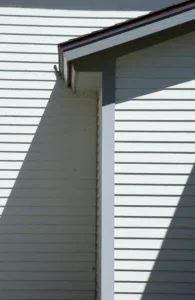Spring has arrived and chances are you have one hundred and one things on your home improvement to-do list. Perhaps your roof has a leak that needs to be repaired, or your gutters need clearing. Maybe your back deck needs sanding, or your living room needs a fresh coat of paint. And while your home improvement list seems like it is never ending, perhaps there is one more thing you should add to the list: replacing your siding. Generally speaking, the state of a house’s siding is often overlooked by many homeowners. This is because the best time to address the siding of your home is when there is no specific or obvious problems. Once cracks in your siding begin to appear and once water begins leaking inside, the time to address the problem without paying a huge price has passed. By regularly inspecting and maintaining your home’s siding, you can get a better picture of the condition of your siding, and replace it before any extensive damage occurs. Below are 8 common signs your siding needs replacing.
1. Your Siding is Cracked
If you notice any cracks, chips, holes or a chalky texture to your siding, it is highly likely your siding needs replacing. Oftentimes, these exterior problems are actually a sign there is a much bigger problem behind the siding panels, such as rot or mold. At this point, it is a good idea to call on a professional home improvement contractor to determine whether your siding needs to be repaired, or completely replaced.
2. You Notice Peeling Paint
If the paint or wallpaper inside your home is peeling or noticeably sagging, this is likely due to water damage on the back side of the wall that is nearest to your siding. Moisture is often due to old or decayed siding, and should be replaced as soon as possible to prevent further and more extensive damage.
3. There is Mold on Your Siding
Mold is another clear sign that your siding needs replacing. If mold or fungus begins to grow on your siding, it is likely you have a moisture issue and the siding needs to be replaced as soon as possible. Also, many homes that have mold or fungus growing on the outside probably have the same problem happening on the material behind the siding.
4. Your Utility Bills Have Increased
If you inspect your siding and see no clear signs of damage, you may want to check for less obvious clues, just to be sure. For example, an increase in your utility bill is often a sign of underperforming siding. If you are feeling drafts near your windows or walls or around switches and electrical receptacles, this could indicate your siding needs to be replaced. Not only would new siding help eliminate drafts, but it would also save you money on your utility bills.
5. Your Siding is Warped
If your siding is bulging, buckling or you notice that it is warped, this is generally a common sign your siding needs replacing. Warping is a common result of moisture fixing itself under the siding panels, which causes the boards underneath to rot and start pushing the siding outward. If this starts to happen, your siding is no longer doing its job, which is to provide a protective barrier for your home.
6. There are Cracks and Gaps
Cracks, holes and gaps in your siding compromise the structural integrity of your home. This is because these kinds of cracks and gaps allow water to seep inside your home, causing all kinds of problems. Furthermore, if water is able to enter your home, so can bugs and insects. And while most pests are relatively harmless, others can be devastating to your home (such as termites).
7. You are Constantly Repainting Your Home
If you are needing to apply a new coat of paint to your siding every five years or so, this may be a sign you have a problem with your siding. Good siding usually maintains its shape and color for at least eight to ten years. If your siding is peeling, chipping or cracking regularly, it is time for you to call in a professional to replace it.
8. Your Siding Has Bubbles
Siding is designed to keep moisture away from the interior walls of your house, so if you notice bubbles under your siding, this is a huge problem. Bubbles are generally a sign that water is being trapped behind your siding, which can cause massive issues for you if not fixed as soon as possible.



